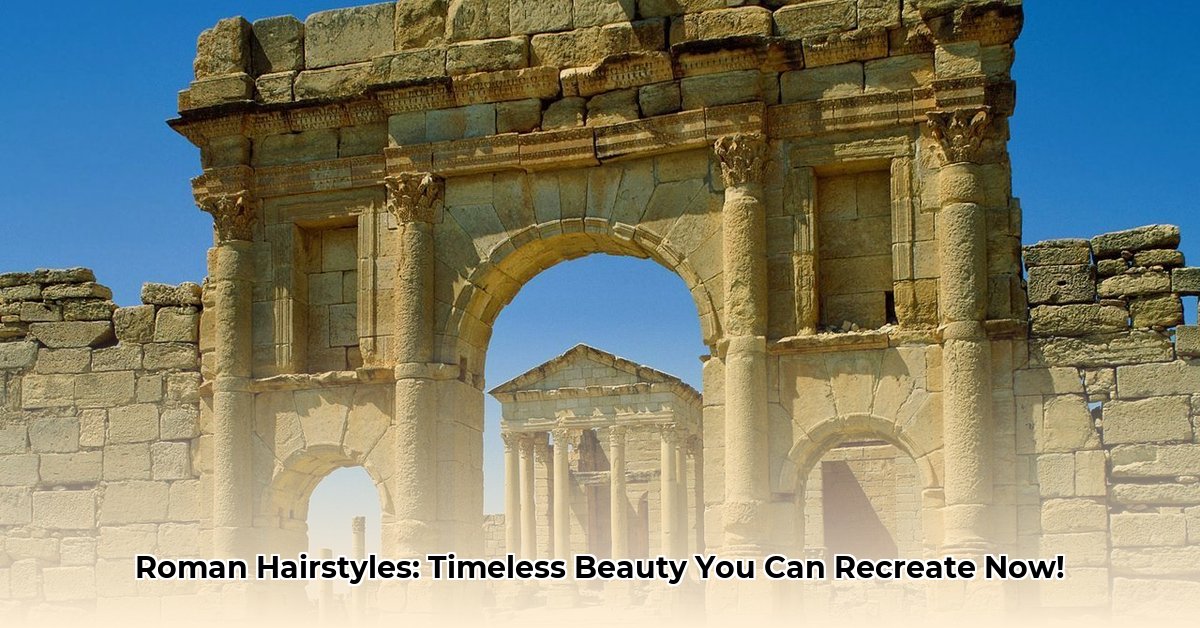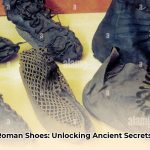Ever wondered what women in ancient Rome did with their hair? Forget modern salons and ephemeral trends – these influential figures had their own unique ways of creating seriously stylish looks. From simple, everyday buns to extravagant, towering masterpieces, a woman’s hairstyle in ancient Rome was far more than just an aesthetic choice; it was a potent statement. This comprehensive guide will delve into the secrets behind these ancient trends, explore how hair served as a marker of social standing, and offer practical steps for those inspired to try a Roman-inspired ‘do today. We’ll also examine the enduring relevance of these classical beauty styles, from historical understanding to contemporary fashion, ensuring an informed approach to hairdressing. Learn more about Roman beauty secrets for context.
The Language of Hair: Status, Power, and Identity in Ancient Rome
Imagine your hairstyle as a daily conversation starter – that was the reality for women in ancient Rome. Unlike in modern times where comfort often dictates style, ancient Roman women preferred complex, often unnatural hairstyles that would clearly demonstrate their wealth and ability to afford elaborate grooming. The more elaborate the coiffure, often accentuated with sparkling jewels, the clearer the indication of wealth and social prominence. These intricate styles frequently required the specialized skills of an enslaved hairdresser, known as an ornatrix. This reliance distinctly illustrates the profound connection between affluence and the adoption of complex updos. The association of “natural” styles with barbarians, whom Romans believed lacked the means or culture for sophisticated grooming, further cemented elaborate hair as a marker of civilized status.
Decoding Social Standing Through Hairstyles
What did Roman hair communicate? It spoke volumes about a woman’s position. Elaborate designs signaled affluence and sophistication, signifying the wearer was part of elegant Roman culture. Simpler styles, on the other hand, typically indicated a more modest life, or perhaps a specific role, such as that of a new bride, a woman in mourning, or someone from a lower social class. For instance, the sheer time and effort involved in maintaining a complex style meant it was a luxury unavailable to many. As with clothing, certain hairstyles were limited to specific people in ancient society, serving as distinct markers for scholars today to chronologically date Roman portraiture and art.
The Art of the Ornatrix and Roman Barber Shops
The ornatrices were highly skilled enslaved individuals, indispensable to the upper-class Roman woman’s public image. They functioned as stylists, colorists, and sometimes even wig-makers, crafting the complex, status-flaunting women’s hairstyles daily. This demanded immense talent, considerable time, and unwavering patience, unequivocally marking it as a privilege afforded only by the affluent.
Barbery itself was introduced to Rome by Publius Titinius Menas around 209 or 300 BCE, bringing a barber from the Greek colonies in Sicily. What began as a personal chore evolved into a thriving profession, particularly during the Imperial period. Barbershops (tonstrinae) became bustling social hubs where gossip and news were exchanged. While the wealthy had private hairdressing services, many men, and even some women, visited these public establishments. Emperor Domitian even regulated barbershops due to the crowds, prohibiting razors from being drawn amidst dense gatherings.
Iconic Roman Hairstyles for Women Through the Ages
Whether simple or extravagant, the hairstyles of ancient Rome eloquently reflected the lives of the women who wore them, changing significantly across historical periods.
The Tutulus: A Symbol of Matronly Dignity
Considered a definitive mark of the materfamilias (married women and mothers of the family), the tutulus hairstyle resembled a soft, conical shape achieved by dividing the hair and piling it high into a bun, often tied with purple wool fillets. It remained a constant style even as fashion changed and was notably worn by the flaminicae (priestesses). This iconic style profoundly emphasizes the role of modesty and gravitas.
The Nodus: Elegance of the Augustan Era
The nodus style was particularly common in the Republican period and became strongly associated with the women of Augustus’s household, including his wife Livia and sister Octavia. In this elegant coiffure, hair was parted in three, with side sections tied in a bun at the back, while the middle section was looped back over itself, creating a distinct knot-like effect above the forehead, reminiscent of a refined Pompadour. This style highlights intricate braiding techniques and the sophisticated use of hairpins.
Flavian and Antonine Extravagance: The Age of Lofty Curls
The Flavian (69–96 AD) and Antonine (98–117 AD onwards) periods saw perhaps the most famous and extravagant Imperial Roman styles for aristocratic women. These styles were lofty, with masses of shaped curls and braids. The high arching crowns on the front were often made using fillets of wool and toupees or hairpieces, creating dramatic chiaroscuro effects in sculptures. Juvenal, an ancient writer, famously likened these towering hairstyles to multi-story buildings, emphasizing their extreme height and complexity. The hair was often combed into two parts: a front section built up with curls, and a back section plaited and coiled into an elaborate bun (orbis comarum). The later Antonine period saw a slight reduction in front-curl height, with braids coiled at the back often resting on the top of the head instead.
Simpler Buns and Wavy Styles
For women of lower social standing or those prioritizing practicality, the simple bun remained a common, practical, and elegant choice. While the aristocracy pursued elaborate styles, many women wore their hair long, gathered behind the head in a bun or ponytail. Later trends also included softer, cascading waves, often with a small braided detail, favored for more casual or private gatherings, symbolizing relaxation and natural beauty.
Julia Domna’s Influential Wig
Julia Domna, wife of Septimius Severus, was a highly influential patron of wigs around 170-217 AD. She sported a heavy, globular wig with simple finger-sized waves and a central parting. Despite her Syrian origins, she adopted a wig to project a familiar Roman guise, reportedly imitating her predecessor, Faustina the Younger. This demonstrates how wigs could be used not just to hide baldness but also to project a specific image or emulate trends, even incorporating foreign aesthetics into Roman fashion.
The Tools, Techniques, and Hair Care of Ancient Rome
Roman women employed a sophisticated array of grooming tools and techniques to achieve their desired looks, indicating a profound dedication to appearance.
Wigs and Hair Extensions
Wigs were widely used by both men and women, regardless of baldness. Emperors like Otho and Domitian famously wore them. Wigs, especially the full capillamentum and the half-wig galerus (which could act as padding or a toupee), allowed for the rapid creation of the tall, elaborate styles popular in certain eras. Human hair was highly prized for wigs, with blonde hair from Germany and black hair from India being particularly sought after, often symbolizing spoils of war. Wigs could be pinned directly onto the head, glued, or even braided into existing hair, offering speed and convenience compared to growing and styling extremely long natural hair.
Dyeing and Bleaching Techniques
Dyeing hair was popular, though frequent dyeing often weakened it. Romans used a variety of natural and artificial dyes. To lighten hair, pigeon dung was applied, and saffron gave golden tones. Red hair was achieved with a mixture of animal fat and beechwood ashes. Black dye was made by fermenting leeches in a lead vessel. Pliny the Elder even suggested bizarre remedies, such as applying leeches rotted in red wine for 40 days to dye hair black. Gold dust was also sprinkled on hair to enhance blondness, as reportedly done by Emperor Lucius Verus. Roman prostitutes famously dyed their hair yellow, often using wigs, to signify their profession.
Hair Styling Tools and Accessories
The calamistrum was the Roman curling iron, consisting of a hollow metal outer cylinder and a smaller solid inner cylinder. Hair was wrapped around the solid part and inserted into the heated outer cylinder to create curls. However, frequent high-temperature curling often led to thinning and damaged hair. Beyond basic combs (made from bone, ivory, or bronze) and pins, hairnets were common. Hairpins, particularly, were crucial for securing intricate updos. Poorer women used wooden pins, while the aristocracy favored gold, ivory, crystal, silver, or painted bone, often decorated with carvings of gods, beads, or pendants. Research by Janet Stephens, an amateur archaeologist and hairdresser, has notably demonstrated how sewing needles (acus) were ingeniously used to stitch intricately arranged hair together, challenging older assumptions about the sole reliance on wigs for complex constructions.
Hair Care and Remedies
Romans used natural ingredients for hair care, such as olive oil and vinegar for washing, and henna or animal fat to make hair more manageable. To prevent graying, a nightly paste of herbs and earthworms was sometimes applied. Pliny the Elder even suggested unusual cures for balding, like a sow’s gall bladder mixed with bull’s urine or the ashes of an ass’s genitals. Goat’s milk or dung was believed to cure head lice. The dedication of hair, such as from a first haircut (often around age 20 or when donning the toga virilis), to the gods was a popular custom. Sailors would shave their eyebrows and dedicate the hair for protection at sea.
Recreating Ancient Roman Hairstyles Today: An Actionable Guide
Want to bring a touch of ancient Rome to your modern look? Here is a simplified, step-by-step guide to recreating an ancient Roman hairstyle for women, allowing for personal expression with historical inspiration:
- Gather Your Tools: You will need a fine-toothed comb, an array of bobby pins and hairpins, strong-hold hairspray or gel, and optionally, hair extensions for added volume or length. For more authentic recreations, consider decorative ribbons, beads, or simple gold headbands reminiscent of Roman adornments. If attempting intricate braids, a hair sewing needle (acus equivalent) and strong thread can be surprisingly effective.
- Choose Your Style & Period: Decide whether you prefer a simpler bun (Tutulus adapted), an elegant Nodus (Augustan), or a more intricate braided/curled look (Flavian/Antonine). Research images of busts or frescoes from your chosen period for accuracy.
- Prepare Your Hair: Begin with clean, dry hair. Apply a small amount of styling product (like mousse or a texturizing spray) to give your hair a slight grip and texture, which will make it easier to manipulate and hold the style. This step significantly improves the longevity of your DIY style.
- Sculpt the Base & Sectioning:
- For a Tutulus-inspired bun: Create a high, sleek ponytail at the crown. Twist the ponytail tightly and coil it upwards into a conical shape, securing with numerous bobby pins.
- For a Nodus-inspired look: Part your hair in the middle. Take a section of hair from the very front (forehead area) and loop it back on itself, pinning it securely just above the forehead. Gather the remaining hair into a low bun or ponytail at the nape.
- For Flavian Volume: Create large, loose curls with a curling iron. Tease the crown for dramatic volume. Pin sections back to create a high, structured front.
- Achieve Volume (As Needed): If your natural hair lacks the volume for certain elaborate Roman styles, strategically incorporate hair extensions. These can be clipped in at the roots or braided into sections to create the desired height and fullness seen in historical depictions.
- Secure and Refine with Precision: Use bobby pins extensively to secure each section and keep the style compact and neat. For complex braided or coiled updos, follow the lead of the ornatrices and use hairpins to stitch sections together for superior hold and shape, referencing historical reconstructions. Do not be afraid to experiment to find what works best for your hair type and desired level of intricacy.
- Accessory Embellishment: Elevate your look by adding appropriate accessories. Simple gold-toned pins, pearl strands, or fabric ribbons can transform a basic style into a luxurious, historically inspired statement, reflecting ancient fashion. Consider a vitta (woolen fillet) for a married woman’s touch.
- Set the Style: Finish with a generous mist of strong-hold hairspray to ensure your Roman-inspired creation remains intact throughout the day or evening. This guarantees the longevity of your carefully crafted updo.
Roman Hairstyles in the Modern World: Enduring Influence and Ethical Recreation
The fashion and beauty industries draw immense inspiration from ancient Roman hairstyles for women. Imagine models showcasing contemporary interpretations of Roman looks on runways or in glossy magazines. Such modern adaptations, blended with historical accuracy, promote both aesthetic appeal and a deeper understanding of fashion history. Collaborating with historians ensures that recreations of Roman-era beauty products and techniques are accurate, fostering a historically informed beauty landscape. The intricate styles that once symbolized wealth and status continue to captivate, offering a tangible link to a rich past.
Ideas for Stakeholders
| Stakeholders | Short-Term Initiative | Long-Term Objective |
|---|---|---|
| Museum Curators/Historians | Incorporate detailed hair analysis into Roman exhibitions to enhance the public’s understanding of ancient portraits and grooming practices, perhaps with 3D models or enhanced lighting to reveal intricate details. | Develop interactive exhibits allowing visitors to virtually “try on” different Roman hairstyles, utilizing AR/VR technology to engage new audiences with historical significance, and highlighting the specific tools and techniques used. |
| Fashion/Beauty Industry | Draw direct inspiration from ancient Roman hairstyles for contemporary collections, emphasizing their timeless elegance and versatility for women’s hair, perhaps launching limited-edition accessory lines inspired by Roman designs. | Partner with historical researchers and forensic hairdressers to authentically recreate Roman-era beauty products and techniques (where safe and ethical), potentially leading to new, historically-rooted product lines that resonate with consumers seeking cultural depth and natural ingredients. |
| Educational Institutions | Use Roman hairstyles as a compelling case study to illustrate the intricate connections among fashion, society, and culture in historical contexts, inviting experts like Janet Stephens for workshops or lectures. | Create interdisciplinary learning modules exploring how social and economic factors, gender roles, and political shifts influenced hairstyle trends throughout history, integrating discussions on the ethics of recreating styles historically tied to slavery or conquest. |
| Reenactment Groups | Host practical workshops focusing on recreating authentic Roman hairstyles, utilizing period-accurate tools and methods, thereby enhancing the accuracy and immersive quality of historical reenactments. | Collaborate with historians to develop a comprehensive, accessible guide to recreating accurate Roman hairstyles, serving as a definitive resource for reenactment groups and enthusiasts aiming for detailed historical representation, including variations based on social class and region. |
Pros and Cons of Recreating Roman Hairstyles
| Pros | Cons |
|---|---|
| They were clear indicators of social status and personal identity, offering deep historical insight. | Many elaborate styles required significant time, skill, and often, the assistance of an ornatrix, making them labor-intensive. |
| They demonstrated the influence of other cultures, like Greek styles, showcasing Roman cultural adaptability. | Some traditional materials or techniques (e.g., lead-based dyes) might not be suitable or readily available for modern hair types due to safety concerns. |
| They allowed for significant creativity and self-expression, making them visually stunning. | Achieving true historical authenticity can be challenging without extensive knowledge, specialized tools, and considerable practice. |
| Offers a unique connection to the past and its artistic expressions, enriching modern appreciation for antiquity. | Certain complex styles might be too cumbersome or impractical to wear comfortably in contemporary daily life, especially without dedicated modern support structures. |
| Can enhance understanding of Roman societal structures and values, particularly regarding gender roles and wealth. | Requires patience and practice to master the intricate braiding, coiling, and pinning techniques characteristic of Roman updos, especially those involving hair stitching. |
What Made Ancient Roman Hairstyles a Status Symbol?
Ultimately, Roman hairstyles were far more than mere passing fads. They were foundational to the social, political, and cultural fabric of ancient Rome. They served as vivid reflections of the values, aspirations, and identities of people within a complex and ever-changing society. The meticulous attention to detail in styling and maintaining hair underscores the profound importance of appearance and its pivotal role in communicating status, power, and cultural belonging. Unveiling these ancient Roman hairstyles for women offers a timeless lesson in beauty, history, and self-expression.










